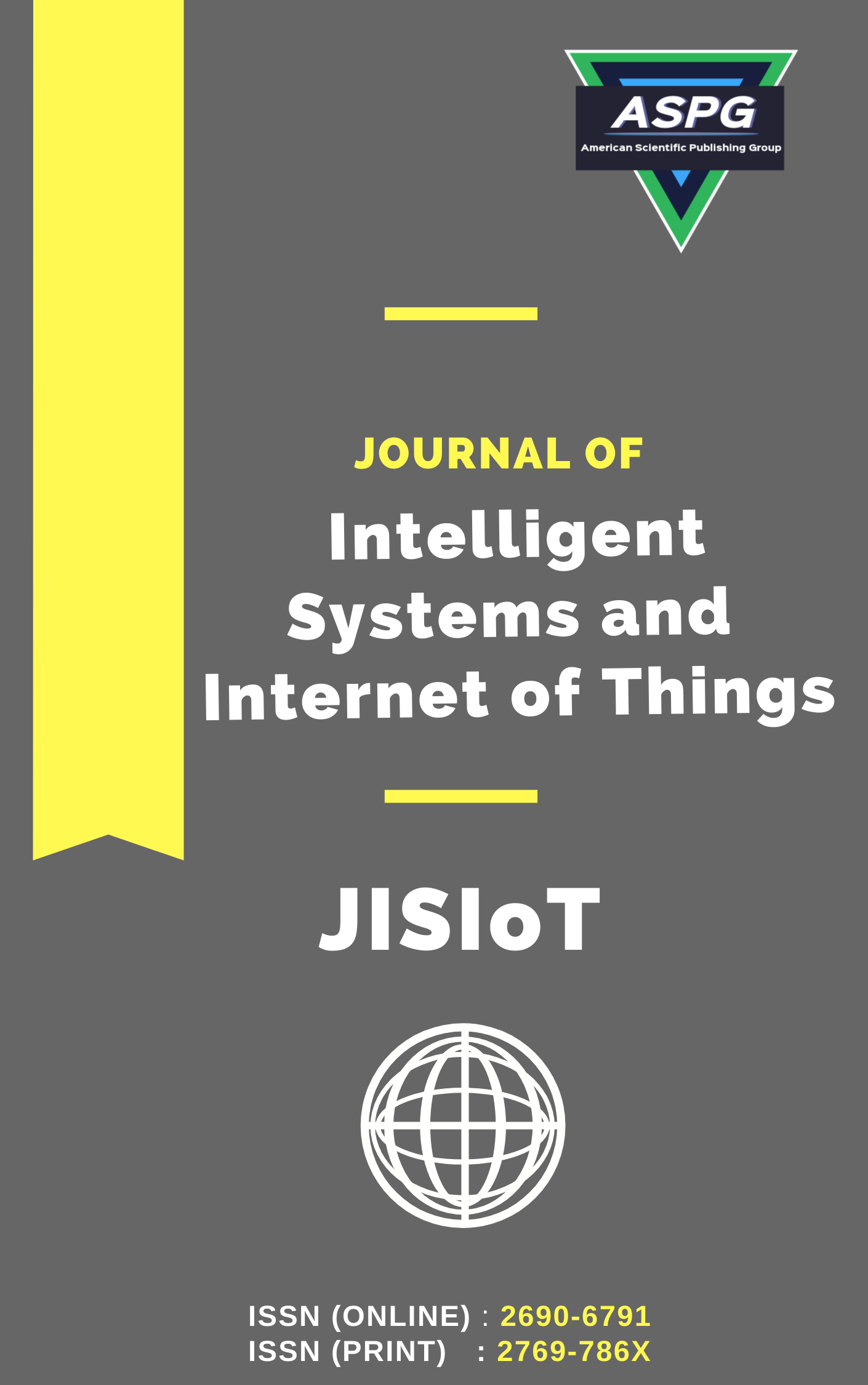

Volume 17 , Issue 1 , PP: 374-388, 2025 | Cite this article as | XML | Html | PDF | Full Length Article
M. Mohan 1 * , R. Vijayakarthika 2 , M. Balakrishnan 3 * , R. Sundar 4 , T. Chithrakumar 5 , Vaishnavi V. 6
Doi: https://doi.org/10.54216/JISIoT.170126
The exponential growth of the Internet of Things (IoT) ecosystem has amplified concerns regarding data privacy, trust management, and cyber resilience in decentralized environments. Traditional perimeter-based security models are inadequate for heterogeneous IoT networks that operate across multiple domains. To address these challenges, this paper proposes a Blockchain-Augmented Zero Trust Architecture (BZTA) integrated with a hybrid intrusion detection mechanism for achieving secure, verifiable, and adaptive threat mitigation in decentralized IoT frameworks. The proposed BZTA employs blockchain-based identity verification to ensure device authenticity and policy-driven Zero Trust enforcement to validate every access request dynamically. A federated intrusion detection model built using Long Short-Term Memory (LSTM) and Graph Attention Networks (GAT) identifies anomalous communication patterns, while smart contracts facilitate tamper-proof logging and automated response coordination. The integration of Proof-of-Trust (PoT) consensus enhances scalability by minimizing latency during transaction validation. Experimental evaluations conducted on simulated IoT network datasets demonstrate a detection accuracy of 98.6%, false positive rate of 1.8%, and an average latency reduction of 22% compared to traditional IDS and standalone blockchain systems. The proposed BZTA framework effectively balances security, scalability, and interoperability, providing a resilient foundation for next-generation decentralized IoT infrastructures.
Blockchain , Zero Trust Architecture , Intrusion Detection System (IDS) , Internet of Things (IoT) , Graph Attention Network (GAT) , LSTM , Proof-of-Trust consensus , decentralized security , smart contracts , federated learning
[1] R. H. Chowdhury, "Next-generation cybersecurity through blockchain and AI synergy: a paradigm shift in intelligent threat mitigation and decentralised security," Int. J. Res. Sci. Innov., vol. 12, no. 8, 2025.
[2] F. A. Idialu, "Leveraging Zero Trust Architectures and Blockchain Protocols to Prevent Credential Stuffing and Lateral Fraud Attacks in Enterprise Systems," Int. J. Comput. Appl. Technol., vol. 14, no. 8, 2025.
[3] Alharbi and M. Alshahrani, "A Comprehensive Survey on IoT Security: Challenges and Solutions," J. Netw. Comput. Appl., vol. 221, p. 103476, 2023.
[4] H. Farooqi, S. Akhtar, H. Rahman, T. Sadiq, and W. Abbass, "Enhancing network intrusion detection using an ensemble voting classifier for internet of things," Sensors, vol. 24, no. 1, p. 127, 2023.
[5] U. Gulati and M. Narayanan, "Blockchain for Critical Infrastructure Security: Applications and Challenges," in Proc. 5th Intell. Cybersecurity Conf. (ICSC), 2025, pp. 62-67.
[6] M. A. Aslam et al., "Securing Symbiotic IoT in 6G Networks Using a Hybrid MCBA‑6GNET Deep Learning Framework for Anomaly Detection," Trans. Emerg. Telecommun. Technol., vol. 36, no. 10, p. e70251, 2025.
[7] K. A. Balankhe, "Leveraging Advanced Machine Learning Ensembles for Enhanced IoT Security: A Comprehensive Study on Intrusion Detection Systems," Doctoral dissertation, National College of Ireland, Dublin, 2025.
[8] M. Priya et al., "Preserving Visual Authenticity: Block chain-Augmented AI Frameworks for Advanced Digital Deception Recognition and Mitigation," in Proc. 5th Int. Conf. Smart Electron. Commun. (ICOSEC), 2024, pp. 707-713.
[9] T. Chai, K. Han, and S. Shin, "Blockchain-based Decentralized Edge Intelligence Collaboration and Adaptive Incentive Mechanism Research," IEEE Internet Things J., early access, 2025.
[10] Panigrahi, B. Sahu, A. Pati, and S. Chowdhury, "Privacy‑Preserving and Scalable Authentication Using zk‑SNARK‑Based ZKP Blockchain PKI," in Digital Immune System: Principles and Practices, 2025, p. 343.
[11] Y. Sanjalawe, S. Fraihat, S. N. Makhadmeh, and E. Alzubi, "AI-Powered Smart Grids in the 6G Era: A Comprehensive Survey on Security and Intelligent Energy Systems," IEEE Open J. Commun. Soc., early access, 2025.
[12] J. Singh, P. Singh, R. Kaur, A. Kaur, and M. Hedabou, "Privacy and Security in the Metaverse: Trends, Challenges, and Future Directions," IEEE Access, early access, 2025.
[13] M. Saxena, N. Senthilkumar, B. Girimurugan, and K. sai Hasan, "Customer Relationship Management in the Digital Age by Implementing Blockchain for Enhanced Data Security and Customer Trust," in Proc. 2nd Int. Conf. Disruptive Technol. (ICDT), 2024, pp. 56-59.
[14] S. AlQaruty, R. Al Qaruty, S. A. Hadi, and K. M. Al-Tkhayneh, "A Systematic Literature Review of Security and Privacy Solutions for the Metaverse," in Proc. 11th Int. Conf. Social Netw. Anal., Manage. Secur. (SNAMS), 2024, pp. 154-160.
[15] V. Wylde, E. Prakash, C. Hewage, and J. Platts, "Post-Covid-19 metaverse cybersecurity and data privacy: present and future challenges," in Data Protection in a Post-Pandemic Society: Laws, Regulations, Best Practices and Recent Solutions. Cham: Springer, 2023, pp. 1-48.
[16] Uulu, "Optimizing Data Integrity and Transparency in Distributed Systems through Blockchain-Enhanced Big Data Management," Transdiscipl. Adv. Soc. Comput., Complex Dyn., Comput. Creativity, vol. 14, no. 10, pp. 1-11, 2024.
[17] S. G. Gray and J. Zandbergen, "The Potential of Sustainable Blockchain Technology for Decentralized and Open-Science to Boost the Economic Growth of the Deep Technology Start-Up Industry. Putting Power Back into the Hands of Academics, Scientists, and Engineers," in Blockchain in Energy. CRC Press, 2024, pp. 74-111.
[18] E. A. Tuli, J. M. Lee, and D. S. Kim, "Integration of quantum technologies into metaverse: Applications, potentials, and challenges," IEEE Access, vol. 12, pp. 29995-30019, 2024.
[19] H. Li, Y. Zhang, Y. Cao, J. Zhao, and Z. Zhao, "Applications of artificial intelligence in the AEC industry: a review and future outlook," J. Asian Archit. Build. Eng., vol. 24, no. 3, pp. 1672-1688, 2025.
[20] R. Chengoden et al., "Metaverse for healthcare: a survey on potential applications, challenges and future directions," IEEE Access, vol. 11, pp. 12765-12795, 2023.